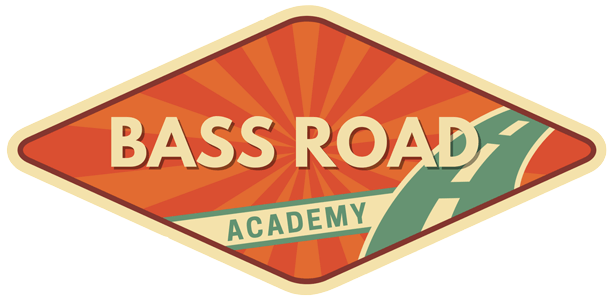Easy Blues Bass Riff That Works Every Time
When it comes down to getting into styles you never played before, like playing blues bass, the transition can feel truly intimidating. For starters, you’ve never done it before so it’s kinda confusing where to start.

In this lesson, I’d like to help you get away with improvising in the blues style.
What you’ll be playing is not strictly a blues thing, but boy does it work so well for blues. This is actually cool, as you’ll be learning a fundamental concept of how music works along the way.
Since a typical blues chord progression will consist of major, dominant or other extended chords that all share the same major chord base – there’s one really neat go-to blues bass pattern that you can use to improvise over a full track.
This pattern is so handy for those unexpected gigs where you need to fill in for a bass player but didn’t got a chance to do the homework.
You can actually use this pattern as a foundation for ALL the blues bass lines you create.
So what is it and why it works?
Using Chord Tones On Bass
You’ll be playing chord tones. These are the actual notes that the chords are built with, but are broken down, so that you can play them as individual notes on the bass. A guitarist or keyboard player would play these notes simultaneously to form a chord. But, as a bass player, the best notes you can choose that surely work 100% over those chords is to simply play chord tones yourself (just don’t strum them all at the same time).
Triads are 3 note chords and they are created by stacking thirds (look up ‘intervals in music’). There are different types of triads just like there are different types of chords (major, minor, etc). Those 3 notes from which chords a built are the strongest notes you can choose to play on bass in order to outline the sound of a chord.
Any of those notes will perfectly blend with the sound of the chord played on another instrument. No tension or anything, they fit just perfectly!
How to Play a Major Triad on Bass
Major triad is made up of root, 3rd, and 5th of a chord. As this is a blues riff lesson, I won’t be going too much in theory from this point.
Here’s a pattern that you need to learn:
A Major Triad on Bass

You can also play this triad in open strings position like this:
A Major Triad on Bass in Open Strings Position

That’s it! Can you believe it?
To re-use this pattern and jam over blues tracks, you just need to move the whole thing to start on the different root note, depending on the chord being played by the band.
The backing track for practice is included in the free lesson resources package.
Triad Lick Blues Song

Bass Only Performance
Need backing track for practice? Download it HERE along with a neatly packaged worksheet PDF for this lesson.
Practice task: learn two included major triad patterns on bass and then improvise your own bass line over the backing track. Concentrate on the chords changes and try to follow them smoothly by moving the pattern to start on root notes of each chord when chord change happens.
I know what you’re thinking, this can’t be right? Is it that simple? Will other musicians think I’m slacking?
The simple answer is NO!
Too many bassists think they need to play some crazy stuff… but when you analyze the music you like, you’ll realize the true nature of bass. Simple is the way to go.
Bass player needs to lay down a strong foundation and groove for the whole band.
To be honest, I think a lot of bass students need to spend way more time practicing this kind of stuff.
You know, foundations and basics. That is how you become a better bass player.
Action Steps
Don’t just check out this lesson, understand the concept and move on.
Take a moment to practice. Fire up the backing track and improvise your own lines over the track.
Over, and over again. That’s the only and sure way to make progress on bass.
Enjoy the ride, music and joy it brings. Spend more time playing, less time watching videos or “reading lessons”.
After all – we are all here for the wonderful music we can make with our beloved bass.
There’s is nothing more satisfying than being able to freely improvise a blues bass groove, chugging along with a band or fav tunes on Spotify.
Handy Resources For Download
To help you follow the strategies I’ve covered in this lesson, I’ve created a handy free package that includes PDF that summarizes everything in this lesson PLUS you get practice backing tracks so that you can play them on your computer or living room audio system and improvise over.
DOWNLOAD LESSON RESOURCES PACK
Learn How To Play Blues Bass From Scratch
The triad pattern application I’ve shown you in this lesson is taken from my Blues Bass – Quick Start Guide course.
It’s a fantastic course to go through if you’d like to get into blues, but don’t know where to start.
The course is completely beginner-friendly, it will equip you with licks and strategies you can be sure will work every time:
Go here to get more information and enroll>>
Suggested Bass Courses
If you’re serious about bass and would enjoy step-by-step online bass lessons and courses, then I strongly suggest checking out how Bass Road Academy online bass courses can help you get results.
That’s it for now, hope you enjoyed this lesson.
Please help me out by sharing this post with your bass colleagues and I’ll be sending more helpful stuff your way.
Keep grooving,
Bogdan
Founder, BassRoad.net


